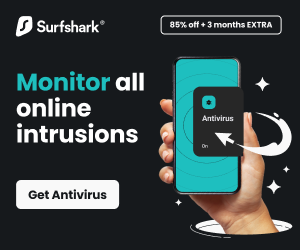Learn how MDR strengthens compliance and reduces breach costs in this post.
Security isn’t just prevention, it’s proof. Regulators want documented evidence your security works. MDR for compliance provides that documentation automatically. Real-time monitoring creates continuous evidence of security efforts.
Threat detection and response get recorded and reported. That documentation satisfies regulatory requirements. Compliance becomes easier when proof exists. Without proof, regulators assume security is lacking.
MDR providers help businesses meet regulatory requirements while minimizing the damage from breaches. Early detection identifies threats before they spread — and a breach stopped early costs nothing.
That prevention benefit far exceeds MDR service fees. Additionally, MDR provides the documentation regulators demand. Compliance and cost control work together through MDR. Managed detection aligns with frameworks like HIPAA, PCI DSS, and ISO 27001 effectively. Here’s how MDR supports compliance while reducing breach costs.
Table of Contents
How MDR Supports Continuous Compliance Monitoring
Compliance requires continuous monitoring, not annual snapshots. Regulations expect ongoing security activities. MDR provides that continuous activity. Monitoring happens 24/7. Threats get detected immediately. Incidents get responded to quickly. That constant vigilance documents compliance efforts. Regulators reviewing compliance records see active security operations. That documentation strengthens compliance posture.
Audit trails from MDR prove security controls are working. Detection events get logged. Response actions get documented. Investigation findings get recorded. That comprehensive record proves security is functional. Auditors reviewing records see evidence of effective security. That evidence supports compliance claims. Without evidence, compliance becomes speculation.
Configuration changes get monitored ensuring controls stay in place. Security controls require maintenance. Updates might disable controls accidentally. Monitoring detects those issues immediately. Controls get restored quickly. That maintenance proves controls are actively managed. Regulatory compliance requires not just having controls but maintaining them actively.
Meeting Reporting and Audit Requirements With Real-Time Data
Breach notification requirements demand speed. When breaches occur, notification must happen quickly. MDR provides immediate detection. Real-time detection enables immediate notification. Delayed detection means delayed notification. That delay violates notification requirements. Real-time MDR makes notification compliance achievable.
Regulatory audits require evidence of incident response processes. When incidents occur, responses must be documented. MDR documents responses automatically. Playbooks execute and get recorded. Investigation findings get logged. That documentation proves processes exist and are working. Auditors want to see evidence, not just hear claims. MDR provides that evidence.
Reporting requirements become easier with continuous documentation. Monthly or quarterly reports become compilations of real-time data. No scrambling to reconstruct incidents after the fact. No missing information from events weeks old. Real-time documentation means reporting is straightforward. That ease reduces compliance burden.
READ ALSO: Top MDR Companies to Protect Critical Infrastructure in 2025
Reducing Breach Impact Through Early Detection
Early detection prevents extensive data theft. Attackers move slowly inside networks planning their actions. That dwell time is your opportunity. MDR catches attacks early preventing extensive access.
Early containment means minimal data exposure. Minimal exposure means minimal breach costs. Prevention through early detection is most cost-effective breach response.
Incident scope determines costs. Large breaches affecting millions of records cost millions. Small breaches affecting thousands cost less.
Early detection keeps breaches small. Prevented breaches cost nothing. That cost reduction is substantial. Breach prevention pays for MDR service repeatedly.
Recovery costs decrease with limited compromise. Full network compromise requires complete remediation. Limited compromise requires targeted remediation.
Targeted remediation costs less and takes less time. Early detection enables targeted response. That efficiency saves money and time.
Why MDR Is a Cost-Effective Path to Security Assurance
MDR costs less than building internal SOC. Hiring security analysts is expensive. Training takes time. Retention is difficult. Building SOC from scratch is very expensive. MDR provides SOC capabilities without building internal team. That cost advantage is significant. Organizations get enterprise security for mid-market price.
Breach costs dwarf MDR fees. Single serious breach can cost millions. Average breach costs exceed $4 million. MDR prevents breaches. Prevented breaches eliminate those costs. That prevention ROI is obvious. Even preventing one breach per decade pays for years of MDR.
Compliance violations cost money. Regulatory fines for non-compliance reach millions. MDR ensures compliance. Compliance prevents fines. That fine prevention pays for MDR. Cost-effectiveness becomes obvious when you include compliance benefits.
Bottom Line
MDR strengthens compliance through continuous monitoring and documentation. Security controls get maintained. Incidents get detected and responded to. Audit trails prove everything. That documentation satisfies regulatory requirements. Compliance and security work together through MDR.
MDR also reduces breach costs through prevention. Early detection stops breaches before extensive damage occurs. Limited breaches cost less. Prevented breaches cost nothing. That cost reduction justifies MDR investment completely. Security and financial benefit align.
MDR provides dual benefit: compliance support and breach prevention. Organizations get better security and lower costs simultaneously. That combination is why MDR adoption is accelerating across regulated industries.
INTERESTING POSTS
- FedRAMP Continuous Monitoring: Strategies for Ongoing Compliance
- Why Line Drying Is Better Than Machine Men’s Essentials Hoodie Drying
- Zero Trust Architecture: Enhancing Network Security
- Securing Your Apple: The Best Protection Tools for Mac in 2025
- Controlling Data Breach And The Use Of DRM For Document Security
About the Author:
Meet Angela Daniel, an esteemed cybersecurity expert and the Associate Editor at SecureBlitz. With a profound understanding of the digital security landscape, Angela is dedicated to sharing her wealth of knowledge with readers. Her insightful articles delve into the intricacies of cybersecurity, offering a beacon of understanding in the ever-evolving realm of online safety.
Angela's expertise is grounded in a passion for staying at the forefront of emerging threats and protective measures. Her commitment to empowering individuals and organizations with the tools and insights to safeguard their digital presence is unwavering.









